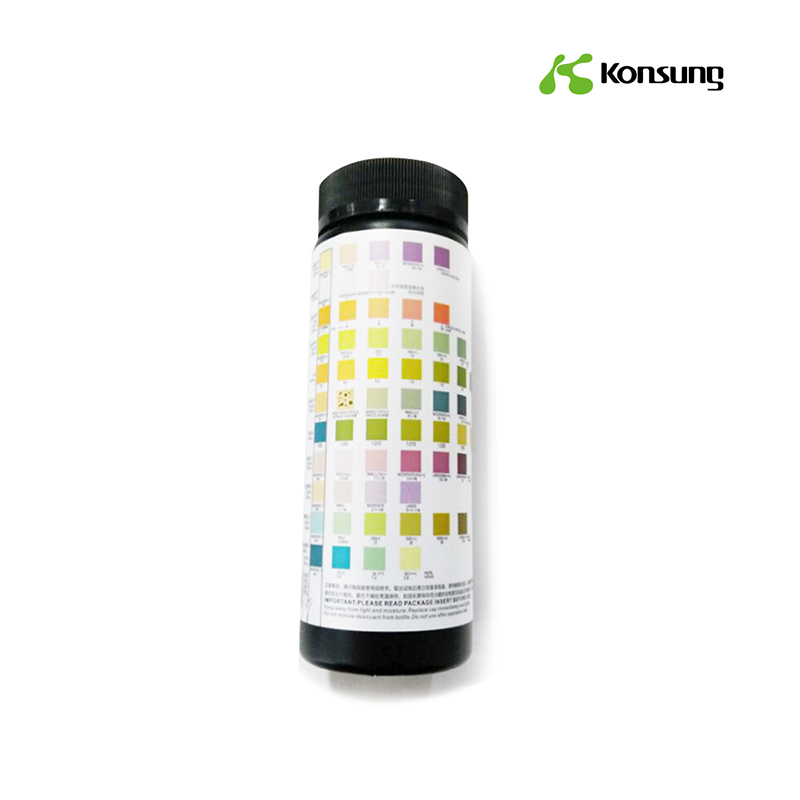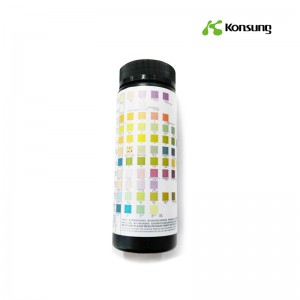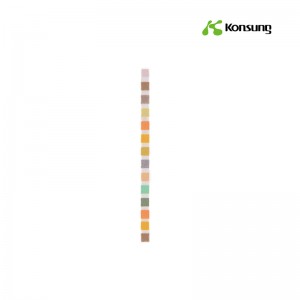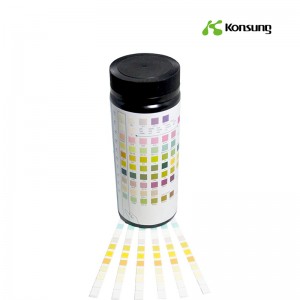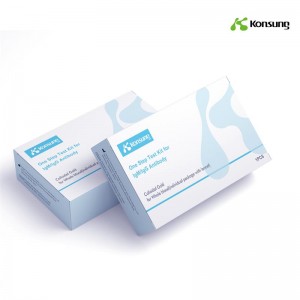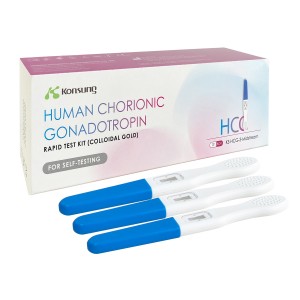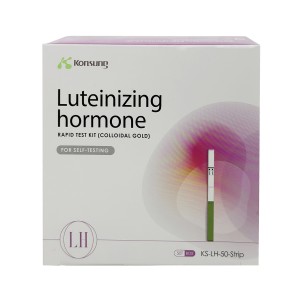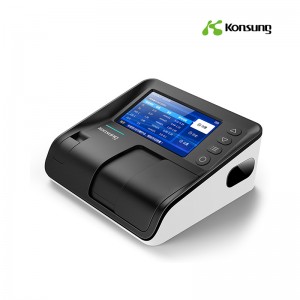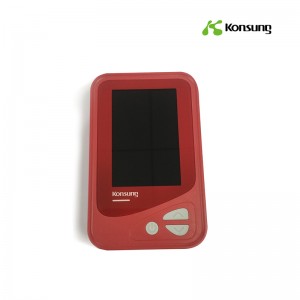Test strip for urine analyzer
Test strip for urine analyzer
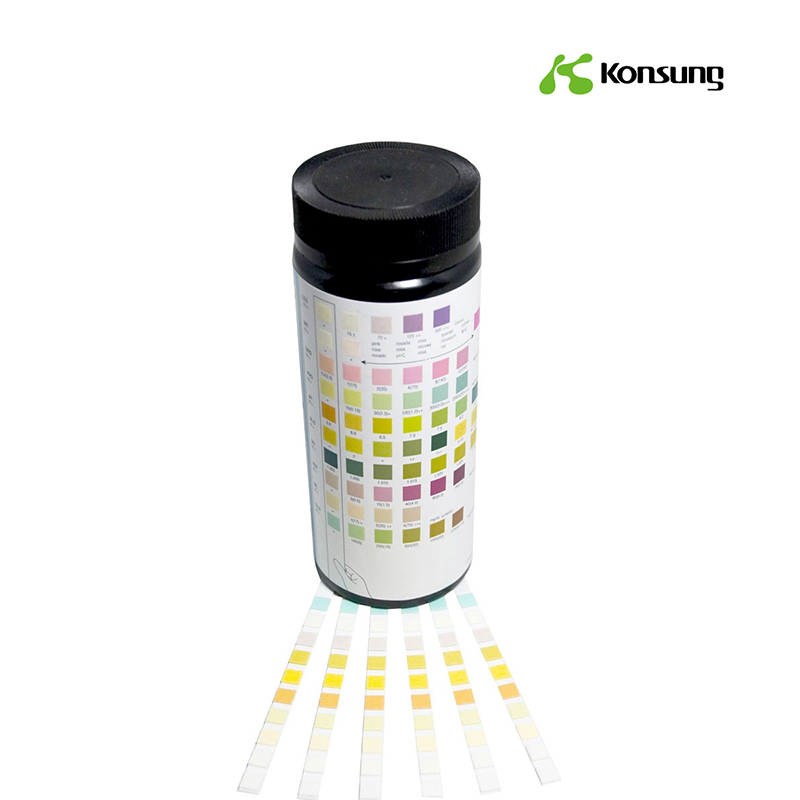
Urine analyzer test trip
TEST PRINCIPLE
◆Glucose: This test is based on a double sequential enzyme reaction. One enzyme, glucose oxidase, catalyzes the formation of gluconic acid and hydrogen peroxide from the oxidation of glucose. A second enzyme, peroxidase, catalyzes the reaction of hydrogen peroxide with potassium iodide chromogen to oxidize the chromogen to colors ranging from blue-green to greenish-brown through brown and dark brown.
◆Bilirubin: This test is based on the coupling of bilirubin with a diazotized dichloroaniline in a strongly acid medium. The colors range from light tan to reddish-brown.
Ketone: This test is based on the reaction of acetoacetic acid with sodium nitroprusside in a strongly basic medium. The colors range from beige or buff-pink color for a “Negative” reading to pink and pink-purple for a “Positive” reading.
◆Specific Gravity: This test is based on the apparent pKa change of certain pretreated polyelectrolytes in relation to the ionic concentration. In the presence of an indicator, the colors range from dark blue or blue-green in urine of low ionic concentration to green and yellow-green in urine of higher ionic concentration.
◆Blood: This test is based on the pseudoperoxidase action of hemoglobin and erythrocytes which catalyzes the reaction of 3,3′,5, 5‘-tetramethyl-benzidine and buffered organic peroxide. The resulting colors range from orange to yellow-green and dark green. Very high blood concentration may cause the color development to continue to dark blue.
pH: This test is based on the: well-known double pH indicator method, where bromothymol blue and methyl red give distinguishable colors over the pH range of 5-9. The colors range from red-orange to yellow and yellow-green to blue-green.
◆Protein: This test is based on the protein error-of-indicator principle. At a constant pH, the development of any green color is due to the presence of protein. Colors range from yellow for a
◆“Negative” reaction to yellow-green and green to blue-green for a “Positive1′ reaction.
Urobilinogen: This test is based on a modified Ehrlich reaction in which p-diethylaminobenzaldehyde reacts with urobilinogen in a strongly acid medium. Colors range from light pink to bright magenta.
◆Nitrite: This test depends on the conversion of nitrate to nitrite by the action of Gram-negative bacteria in the urine. The nitrite reacts with p-arsanilic acid from a diazonium compound in an acid medium. The diazonium compound in turn couples with 1,2,3,4- tetrahydrobenzo(h) quinolin to produce a pink color.
◆Leukocytes: This test is based on the action of esterase present in leukocytes, which catalyzes the hydrolysis of an indoxyl ester derivative. The indoxyl ester liberated reacts with a diazonium salt to produce a beige-pink to purple color.
Ascorbic Acid: This test is based on the action of a complex chelating agent with a polyvalent metal ion in its higher state and an indicator dye that can react with the metal ion in its lower state to produce a color change from blue-green to yellow.
◆Creatinine: this test is based on the reaction of creatinine with sulphates in the presence of peroxide, this reaction catalyzes the reaction of CHPO and TMB. Colors range from orange to green and blue, in relation to the creatinine content.
◆Calcium ion: this test is based on the reaction of calcium ion with Thymol blue in the Alkaline condition. The resulting color is blue.
◆Microalbumin: Microalbumin Reagent Strips permit detection of elevated albumin sooner, more sensitively and more specifically than products designed for general protein testing.
Product details:
◆Urinalysis Reagent Strips for Urinalysis provide tests for pH, specific gravity, protein, glucose, bilirubin, urinary bile proto, ketone, nitrite, blood or red blood cells, white blood cell, Vitamin C, urinary creatinine, urinary calcium and urinary microalbuminuria in urine. Test results may provide information regarding the status of carbohydrate metabolism, kidney and liver function, acid-base balance and bacteriurea.
◆High sensitive accuracy up to 99.99%

